

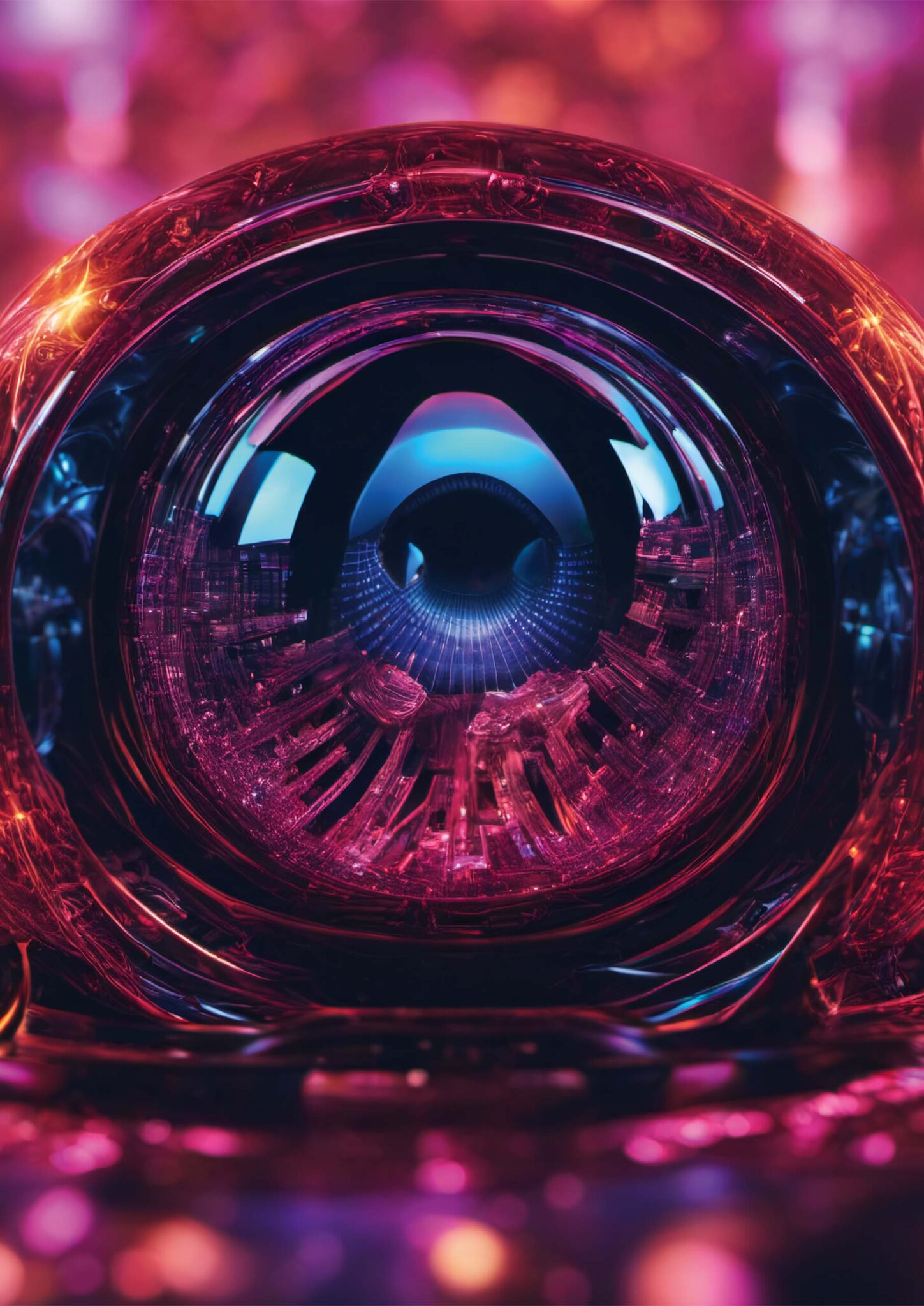
QUBIT AI: Valentin Rye
Around The Milky Way
FILE 2024 | Aesthetic Synthetics
International Electronic Language Festival
Valentin Rye – Around The Milky Way
In the distant future, several species inhabit the Milky Way. This scenario inspired the video, aiming to portray various forms of life and evoke a plausible atmosphere. Using images he created, the artist experimented with Stable Video Diffusion, a new video generation method. The objective was to expand the limits of this neural network and improve its output, resulting in the conception of this video.
Bio
Valentin Rye is a self-taught machine whisperer based in Copenhagen, deeply passionate about art, composition and the possibilities of technology. He has been involved in AI and neural network image manipulation since starting DeepDream in 2015. While his IT work lacks creativity, he indulges in digital arts during his free time, exploring graphics, web design, video, animation and experimentation with images.

QUBIT AI: Kelly Luck
Kelly Luck
Strangeland 1 (excerpt)
FILE 2024 | Aesthetic Synthetics
International Electronic Language Festival
Kelly Luck – Strangeland 1 (excerpt) – United States
From a surrealist point of view, the main attraction of generative AI, for the artist, is its lack of memory. At any given moment, she only has the current frame and instructions on how to proceed, similar to free association in dreams. This work is part of a series of long-term environments designed to immerse the viewer in a constantly evolving and never-ending landscape, inviting relaxation and engagement.
Bio
As part of the first generation to grow up around computers, Kelly Luck quickly became fascinated with the creative possibilities of this new technology. Her journey has ranged from pixel art and graphic ‘hacks’ to the 90s demoscene, 2D and later 3D graphics, and now the modern tools of digital art. With the emergence of generative AI, it endlessly explores how technology continues to blur the line between imagination and reality.
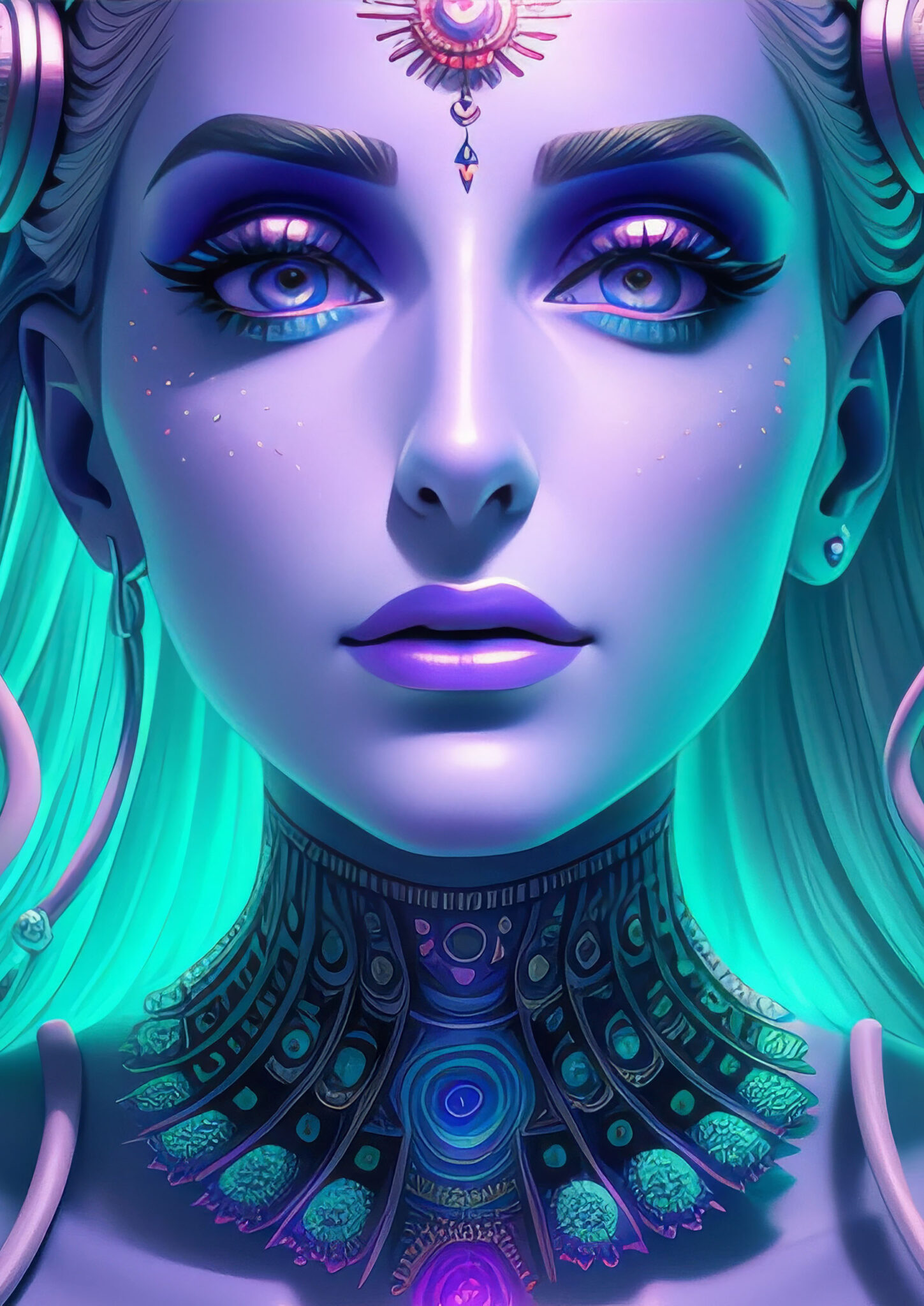
QUBIT AI: Verbo Pluriel (aka volt46) & XWave
Squid
FILE 2024 | Interator – Sound Synthetics
International Electronic Language Festival
Verbo Pluriel (aka volt46) & XWave – Calamar – United States and France
The Calamar music video is comprised of AI-generated clips that are sequenced and synchronized to create a hypnotic, ever-changing landscape.
Bio
Verbo Pluriel is an electronic music producer who has been active in the NFT scene since 2020 under the name volt46. X-Wave is also an NFT producer that trains its own AI models to generate collections. Although they never met in person, their participation in the web 3.0 art collective Based Ghouls led to their collaboration.
Credits
Music: Calamar (Kraken Mix) by Verbo Pluriel
Music Video: volt46
AI Video Generation: XWave

QUBIT AI: Dennis Schöneberg
Bodydub
FILE 2024 | Interator – Sound Synthetics
International Electronic Language Festival
Dennis Schöneberg – Bodydub – Germany
This video experiment combines music properties with AI generation settings to create a unique audiovisual experience. The synthesizer works as a control instrument for movement in the 3D space of the video.
Bio
Dennis Schöneberg, German AI artist, data science student and developer of open source AI models, integrates his passion for electronic music into his creative endeavors. Merging art with technology, he explores the synergy between creativity and artificial intelligence.
Credits
Music: Bodydub (Bangkok Impact Remix) by Unit4

Ziyang Wu
Event Modeling
AI Fossil
The work began with the collection and collation of various news and social events that have occurred or are happening based on social media algorithms, and utilized dreamfields3D to generate 3D models using the titles of news/events as the seeding words/sentences. In the era of AI technology blowout (but also in its “baby-like” era), the work records all kinds of human information as “AI fossils” through AI text to 3D model generation technology. In the future “abandoned factory” scene that is mixed with reality and virtual, it is full of different experiences between humans and AI on the same event. Human information is presented as some realistic fragments, some historical fossils, a pile of metal carvings, or a pile of inferior plastic toys.

Neri Oxman
MAN-NAHĀTA
Computational growth across material and urban scales offers a framework for design through self-organization, enabling the generation of vast, diverse forms exhibiting characteristics like those that emerge through the biological growth processes found in Nature. In this project, we construct an oriented volume spanned by surface normals of the shape at every point. The value of the oriented volume drives the iterative deformation of the shape. Depending on the parameterization of this process, we can obtain distinctly different growing forms. Importantly, the emergence of these forms is driven only by the time evolution of a geometric operator acting on the shapes iteratively, thereby connecting geometry and growth through an algorithm. To form the Man-Nahata landscape, the buildings of the urban landscape are transformed through repeated morphological closing operations, where the field of influence follows a gradient from the center to the outskirts of a circular region.
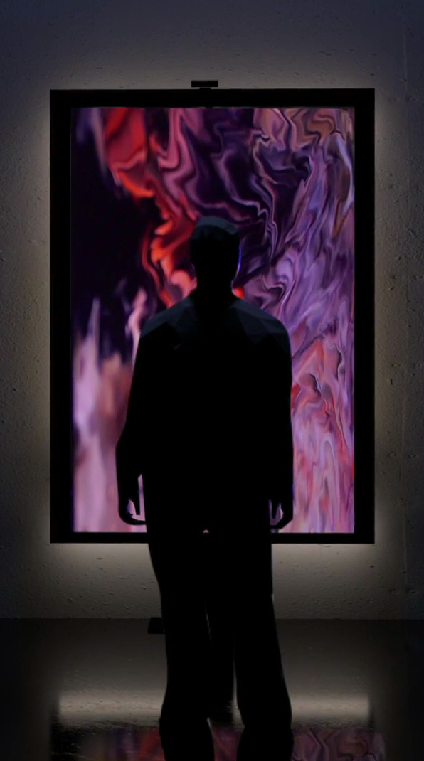
Kati Katona
Kati Katona est une artiste multimédia basée à Budapest. Son travail est axé sur la génération, animation procédurale et 3D, art de l’installation interactive, mappage de projection et conception sonore. Kati s’inspire fortement des éléments de la nature, des structures biomorphes et des algorithmes trouvés dans la nature. En tant qu’artiste visuelle, elle a participé à divers projets audiovisuels, tels que Zagar AV Experience et se concentre constamment sur l’expérience des dernières technologies.

SOUGWEN CHUNG
Zeichenvorgänge
Sougwen Chung ist eine international bekannte multidisziplinäre Künstlerin, die handgezeichnete und computergenerierte Markierungen verwendet, um die Nähe zwischen der Kommunikation von Person zu Person und der Kommunikation von Person zu Maschine zu untersuchen. Sie ist eine ehemalige Forscherin am MIT Media Lab und derzeit Artist in Resident bei Bell Labs und dem New Museum of Contemporary Art in New York. Ihre spekulative kritische Praxis umfasst Installation, Skulptur, Standbild, Zeichnung und Performance. Drawing Operations Unit: Generation 1 ist die erste Stufe einer laufenden Studie über die Interaktion zwischen Mensch und Roboter als künstlerische Zusammenarbeit.
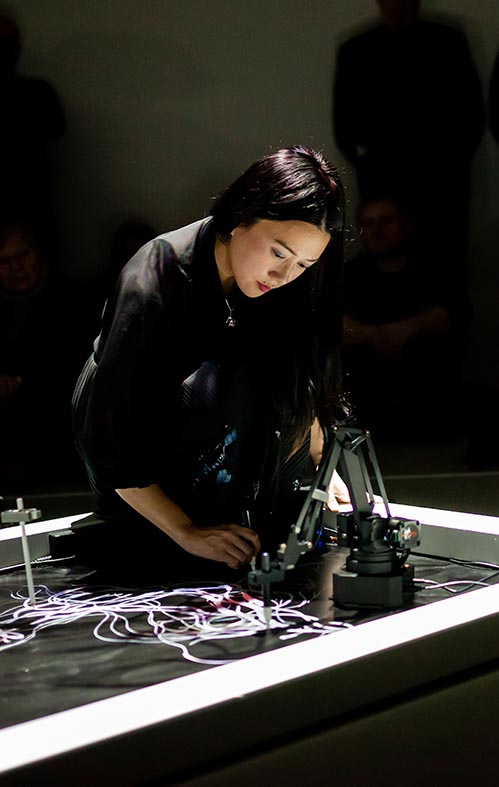
Sougwen Chung
愫君
Drawing Operations
Sougwen Chung is an internationally renowned multidisciplinary artist, who uses hand-draw and computer-generated marks to address the closeness between person-to-person and person-to- machine communication. She is a former researcher at MIT Media Lab and current Artist in Resident at Bell Labs and New Museum of Contemporary Art in New York. Her speculative critical practice spans installation, sculpture, still image, drawing, and performance. Drawing Operations Unit: Generation 1 is the 1st stage of an ongoing study of human and robotic interaction as an artistic collaboration.
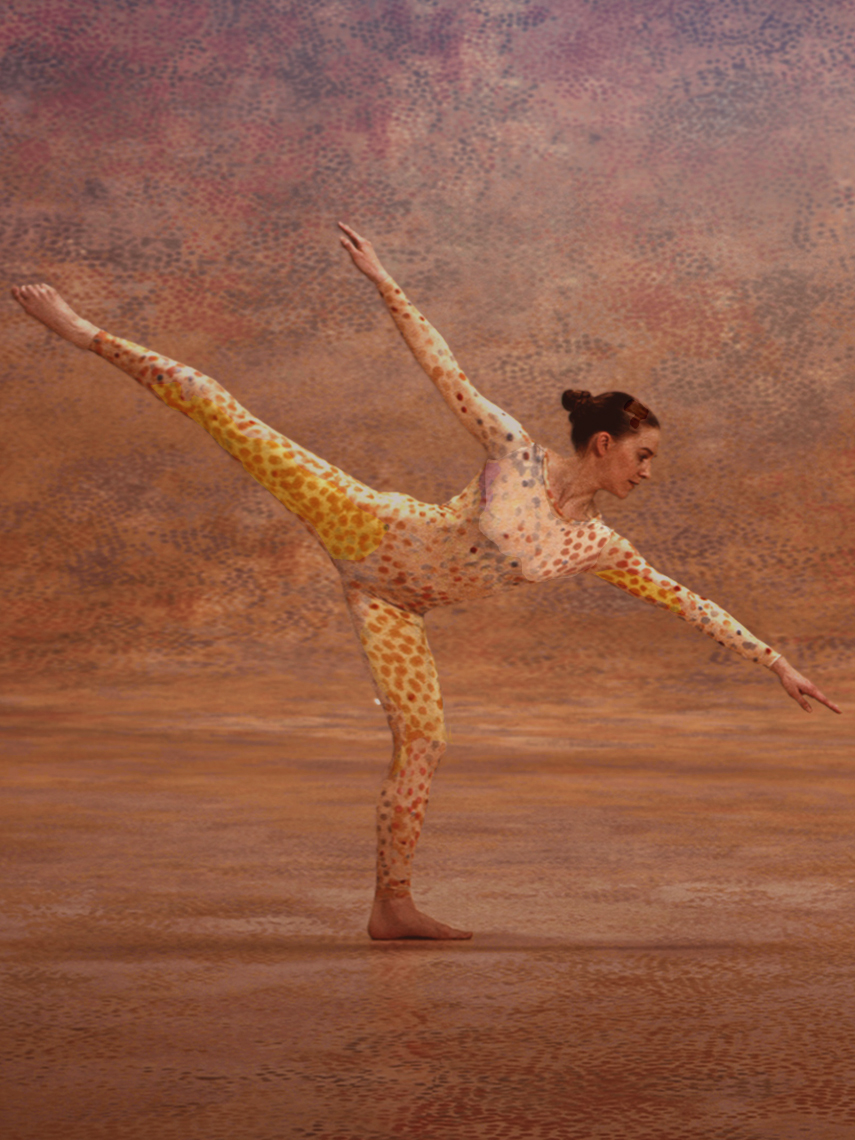
MERCE CUNNINGHAM
Cunningham Clip -Summerspace
CUNNINGHAM is a 3D cinematic experience about the legendary American choreographer, Merce Cunningham, orchestrated through his iconic works and performed by the last generation of his dancers. This poetic film traces Merce’s artistic evolution over three decades of risk and discovery (1944–1972), from his early years as a struggling dancer in postwar New York to his emergence as one of the most visionary and influential choreographers worldwide. 3D technology weaves together Merce’s philosophies and stories, creating a visceral journey through the choreographer’s world.
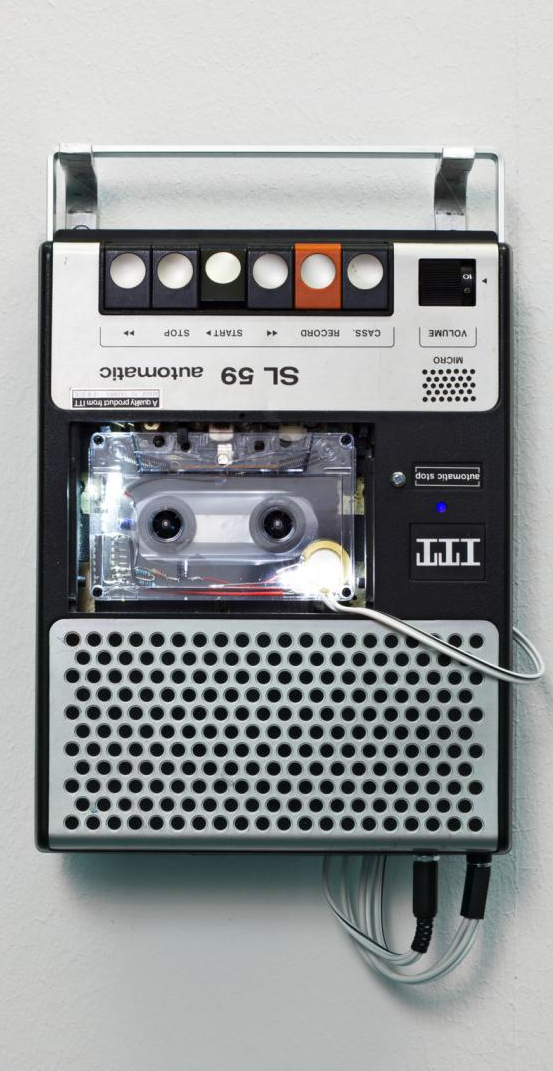
STEPHEN CORNFORD
Binatone Galaxie
Eine Installation für gebrauchte Kassettenspieler, die ihre Obsoleszenz nicht als Ende, sondern als Gelegenheit betrachtet, ihr Funktionspotential zu überdenken. Als Wiedergabegeräte abgelöst, werden sie zu eigenen Instrumenten. Das Ersetzen des aufgezeichneten Inhalts jedes Bandes durch ein Mikrofon gibt uns die Möglichkeit, stattdessen die rhythmischen und resonanten Eigenschaften dieser einst allgegenwärtigen Plastikschalen zu hören. Binatone Galaxy rückt den Rahmen in den Mittelpunkt, in dem eine Generation ihre Lieblingsplatten gekauft hat, und enthüllt die Akustik der Kassette und die Stimmen der Maschinen selbst.

Moritz Simon
Glitch Robot
The Installation consists of several robotic actors. When the actors make contact with their instruments, they produce a sonic impression of an omnipresent texture of modern life: electronic music. The music robots used in this performance consists of recycled and 3D-printed parts such as harddisks, relays, tongues, motors and solenoids. Glitch Robot connects mechanical, visible movements to audible sound by using small sound-producing robots. Thus, the installation highlights the origin of the sound in a way no conventional medium of electronic music production is able to. Typically, electronic music eliminates the haptic aspect of sound-generation, creating a void in understanding of how sound, and thus music, is mechanically created.
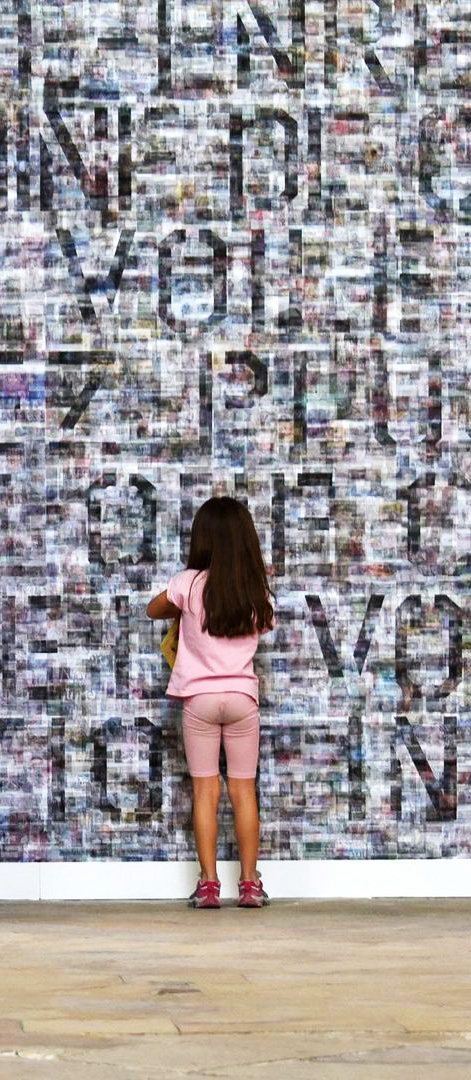
Pascal Dombis
La Génération Invisible
La Génération Invisible est une installation dans laquelle Pascal Dombis questionne notre rapport aux images numériques et comment nous les regardons aujourd’hui. Internet génère une profusion d’images qui circulent et qui sont de moins en moins regardées par les humains. Cette installation parle de la disparition des images de par leur circulation et prolifération excessive. Le mur est couvert par un flux de 30 000 images internet entrelacées formant une surface visuelle floue. La nature individuelle de chacune des images peut être décodée par l’utilisation d’une plaque lenticulaire que le visiteur applique directement contre le mur, afin d’en extraire de multiples lectures. Cette installation fait écho au travail de William Burroughs sur le langage et les images en reprenant une phrase d’un de ses livres Cut-Up de 1961 :
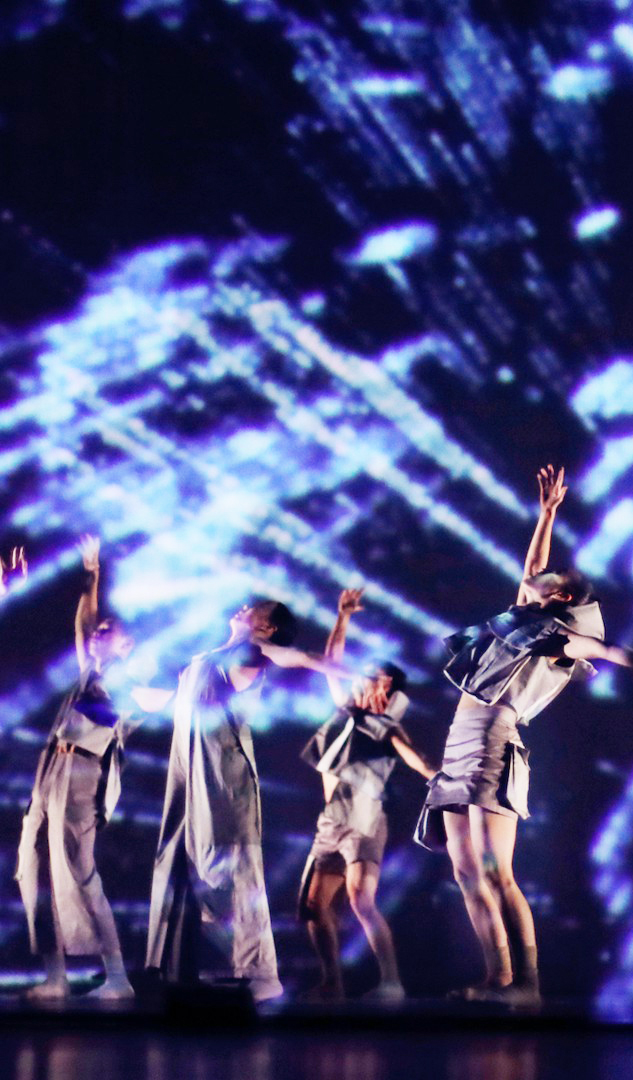

Driessens & Verstappen
Breed
Breed (1995-2007) is a computer program that uses artificial evolution to grow very detailed sculptures. The purpose of each growth is to generate by cell division from a single cell a detailed form that can be materialised. On the basis of selection and mutation a code is gradually developed that best fulfils this “fitness” criterion and thus yields a workable form. The designs were initially made in plywood. Currently the objects can be made in nylon and in stainless steel by using 3D printing techniques. This automates the whole process from design to execution: the industrial production of unique artefacts.
Computers are powerful machines to harness artificial evolution to create visual images. To achieve this we need to design genetic algorithms and evolutionary programs. Evolutionary programs allow artefacts to be “bred”, rather than designing them by hand. Through a process of mutation and selection, each new generation is increasingly well adapted to the desired “fitness” criteria. Breed is an example of such software that uses Artificial Evolution to generate detailed sculptures. The algorithm that we designed is based on two different processes: cell-division and genetic evolution.
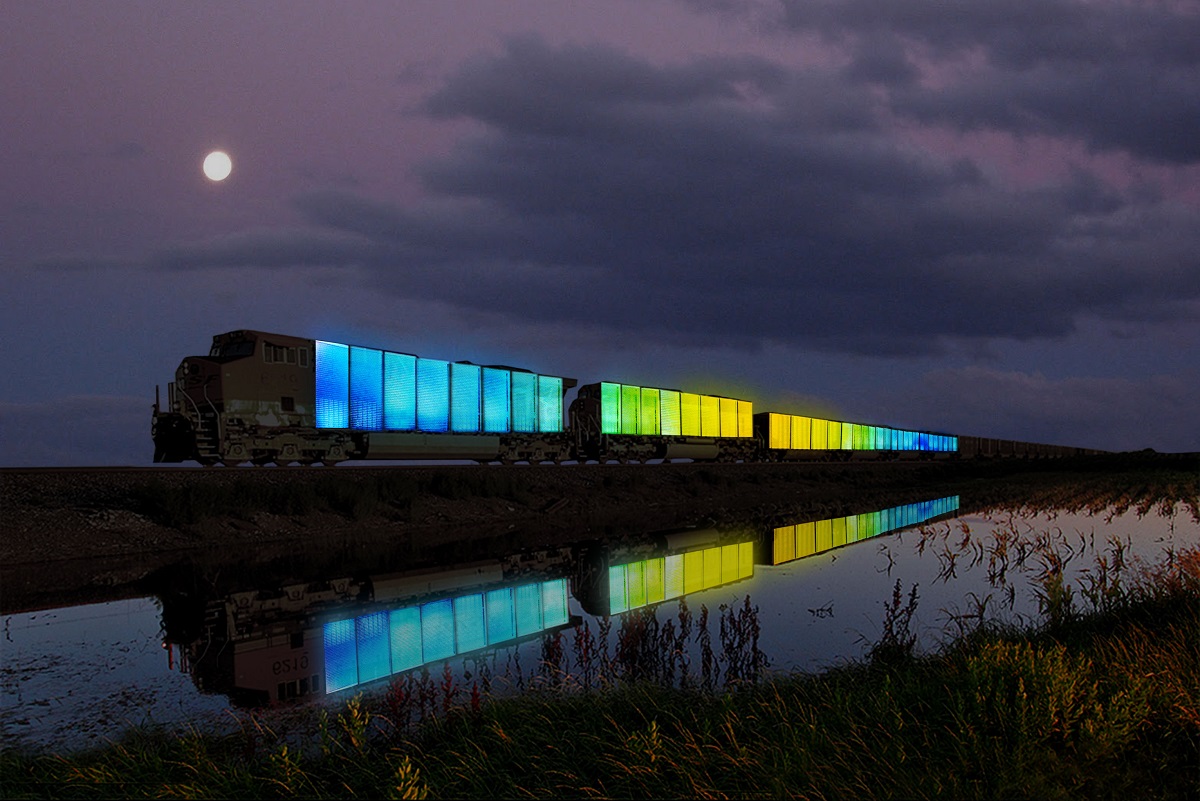
Doug Aitken
ダグエイケン
道格·艾特肯
Station to Station
Doug Aitken gilt als einer der wichtigsten Künstler unserer Generation. Seine Projekte sind immer over the top und noch nie dagewesen. Er erweitert Horizonte und sucht nach neuen Grenzen. Jetzt hat er das Projekt Station to Station organisiert. Im September gehts los und gefahren wird in einem Zug von Station zu Station quer durch die USA. An Bord sind Künstler, Musiker, Köche, Autoren, Filmemacher und Philosophen. Inspiration ist wohl das gleichnamige Album von David Bowie. Mit von der Partie im Zug und an den einzelnen Stops auf dem Weg sind Künstler wie Urs Fischer, Christian Jankowski, Aaron Koblin, Ernesto Neto, Jack Pierson, Alice Waters, Rick Moody, Rirkrit Tiravanija, Kenneth Anger und Musiker wie Savages, Cold Cave, Cat Power, Ariel Pink, Charlotte Gainsbourg, Beck und und und. Entweder reist ihr dem Zug hinterher oder, wenn Euch das zu anstrengend ist, dann reist ihr virtuell auf der Website mit.

Carlos Motta
Patriots, citizens, lovers was developed in conversation with Ukrainian journalist Maxim Ivanukha as a commission of the PinchukArtCentre’s Future Generation Art Prize 2014 and is composed of ten urgent interviews with Ukrainian LGBTI and queer activists who discuss the critical and dire situation of lesbian, gay, trans and intersex lives in Ukraine in times of war[…] Social invisibility, physical and psychological abuse, political violence, and a deeply patriarchal culture frame the context for the difficult work of LGBTI activists who denounce discrimination and demand the transformation of the system.

Minimaforms
Emotive city
Emotive City is a framework to explore a mobile and self-organizing model for the contemporary city. Models of the past are limited and should not operate, as blueprints for our urban future, a new generation of design enquiry by necessity must address the challenges of today. The fixed and finite tendencies that once served architecture and urbanism have been rendered obsolete. Today the intersections of information, life, machines and matter display complexities that suggest the possibility of a much deeper synthesis. Within this context, architecture is being forced to radically refactor its response to new social and cultural challenges with an environment of accelerated urbanization. We propose a framework that participates and engages with the information-rich environments that are shaping our lives through a model of living that we call an adaptive ecology.

Iris Van Herpen
Roots of rebirth
During such rarefied times, the designer explores a symbiosis of high technology and the artisanal craftsmanship of couture, through a collection that references the intricacy of fungi and the entanglement of life that breathes beneath our feet. Through ‘Roots of Rebirth’, Van Herpen notions towards the miraculous lacery of interconnectedness from the natural ‘wood wide web,’ weaving a dialogue between the terrestrial and the underworld. ‘Roots of Rebirth’ extends its own branch, an invitation to a sequence of 21 looks inspired by roots and spores. During the show, the models seem to magnetise a living lace of spores with each stride, the entanglement of each garment resembles roots of regeneration.

Fito Segrera
The form of becoming
In this abstract system, each intelligent agent is embodied as a motor, the states in its environment is represented as an angular range of rotation and the actions as one of two directions in which each agent can move a linear actuator. Each linear system holds a segment of a long black string, this translates as a point in the represented line. Once the system runs, each agent learns, from informational equivalents of pain and pleasure, to move towards the highest values within its environment, this means ultimately to displace its position from point A to B. In order for an agent to learn, it needs time, generations of exploration, each agent will get punished for bad decisions and rewarded for appropriate ones. Every time a learning generation is finished, a light will blink for that particular agent, indicating the end of a cycle and the achievement of new knowledge; the agent becomes more intelligent. Once all agents learned to be and stay in point B, the system, as a collective, has successfully mutated into a stable, balanced, symmetric and silent form; a straight line. Finally, after a few seconds, the sculpture forgets, all agents are rebooted and the cycle of creation, chaos and order restarts, this time with a totally different and unique behavior.

Maotik
Erratic Weather
Despite some world leaders skepticism, climate change is a reality and the world isn’t just warming, in some parts of the planet the weather is becoming more erratic. During the last years, our generation has started to observe the effects and consequences of this shift, witnessing violent and unexpected climate phenomenons. Erratic Weather is a digital art project aiming to represent changing atmospheric conditions into an immersive multimedia experience. During the performance, the system uses various source of weather information retrieved from an online database and processed on real time to generate a visual and a surround sound composition. During 30 minutes the audience will experience the life cycle of swirling phenomenons such typhoon, hurricane and tropical cyclone , demonstrating the devastating power of the nature and the emergency to preserve it.

Mika Tajima
New Humans
In New Humans, emergent gatherings of synthetic humans rise from the surface of a black ferrofluid pool. Appearing to morph like a supernatural life form, these dynamic clusters of magnetic liquid produced by machine learning processes are images of communities of synthetic people–hybrid profiles modeled from actual DNA, fitness, and dating profile data sets sourced from public and leaked caches. The work questions how we can radically conceptualize the “user profile” to embody a self whose bounds are indefinable and multiple. Generative algorithm using machine learning (GAN, T-SNE) and fluid simulation (Navier Stokes), countour generation (OpenCV), user profile data caches (DNA, fitness, and dating), software production (Processing), ferrofluid, custom electromagnet matrix, custom PCB control system, computer, steel, wood, aluminum.

OPN Studio
Give my Creation… Life!
Give my creation… Life! Is a project which links Art, Science and Technology. It is based on the generation of energy through the heart beating, with the aim of granting autonomy to a machine. During the research of this subversive goal, multiple issues have been addressed, such as the extension of a removed organ´s life, its artificial feeding of nutrients and its use as a source of natural energy, among others.

Mathias Gartner & Vera Tolazzi
THE TRANSPARENCY OF RANDOMNESS
“The Transparency of Randomness” gives insight into the world of randomness. In this interactive installation, visitors can directly experience the significance of the complex interplay of randomness and stochastics in current mathematical and physical research. 27 transparent boxes, floating in space, continuously generate random numbers by using the well-known medium of the dice.The process of random number generation is influenced by the complexity of nature and its structures, using a variety of natural materials. The ensemble of all generated random numbers forms the basis of a real-time calculation and comprehensibly demonstrates the impressive role in scientific research.
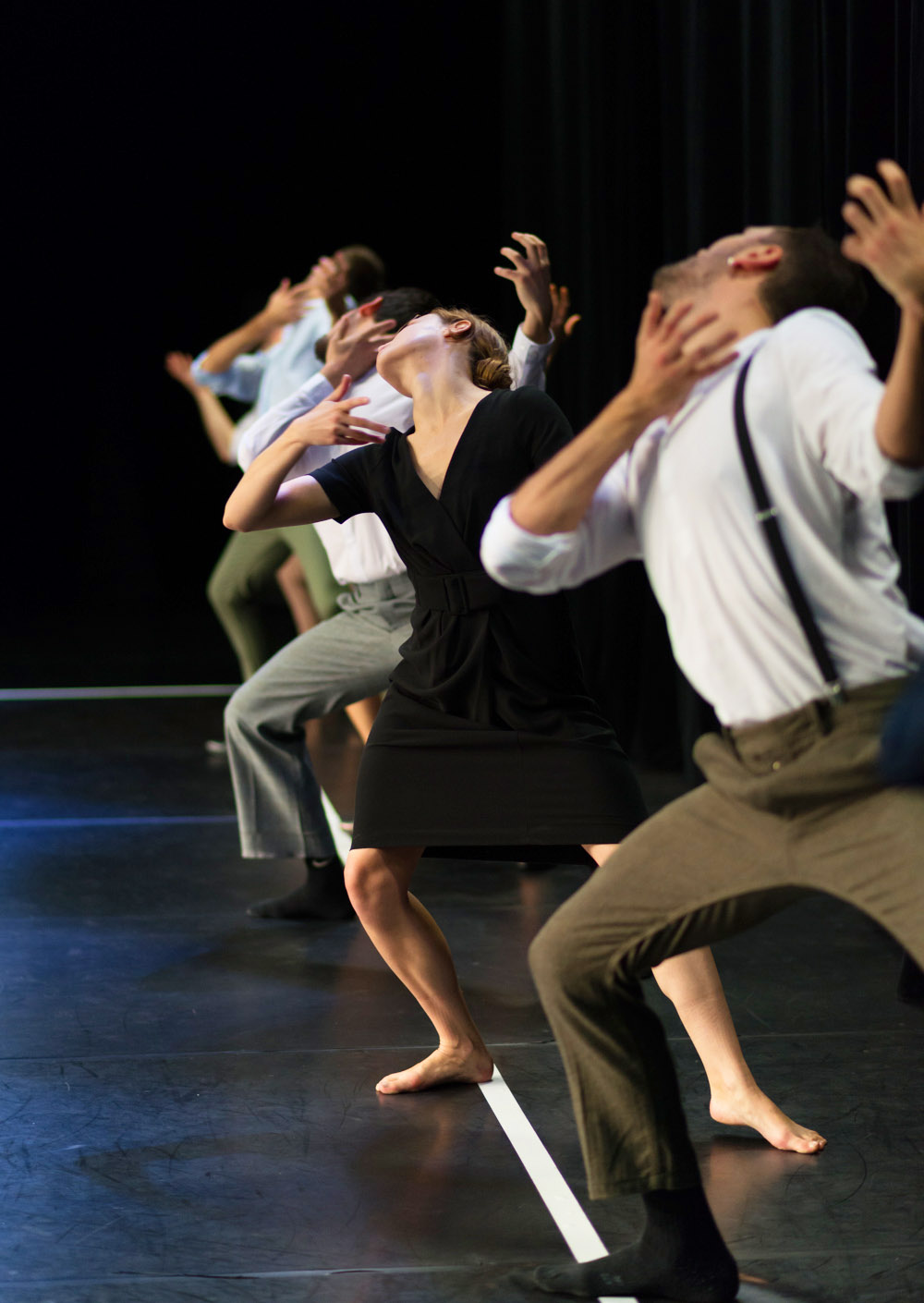
thomas lebrun
Avant toutes disparitions
“Before any disappearance“, it is urgent to live, to dance, especially to transmit. By continuing his playful exploration of the history of dance and in particular by defeating the codes of ballroom dancing, the current director of the Center chorégraphique de Tours once again imposes an intergenerational vision of his art.

Nao Tamura
Lexus Interconnection
There are forces in nature that are beyond the control of mankind. We have learned how fragile we are in the face of such forces. However, we have also learned the importance of accepting nature and learning to live in harmony with it. Interconnected and interdependent, there is a constant give-and-take in nature. Life does not rest. Our collective motion, nature’s response to our movements is essential to our planet’s delicate balance. When we are one with nature, we are at our most powerful. Our movement together gives us life. Our movement forward creates the next generation of ideas. Life is always more amazing in motion.

Michael Sedbon
CMD
Here are 2 artificial ecosystems sharing a light source. Access to this light source is granted through a market. Each colony of photosynthetic bacterias can claim access to light thanks to credits earned for their oxygen production. The rules driving the market are optimized through a genetic algorithm. This artificial intelligence is testing different populations of financial systems on these 2 sets of Cyanobacteria. Like so, the photosynthetic cells and the computer are experimenting with different political systems granting access to this resource. The system oscillates between collaborative and competitive states. The genetic algorithm pictures the rules of these proto-societies as genes. By breeding populations of societies, new generations of markets arise. Like so, the sum of microscopic series of events determines the status of the system at a macroscopic scale.
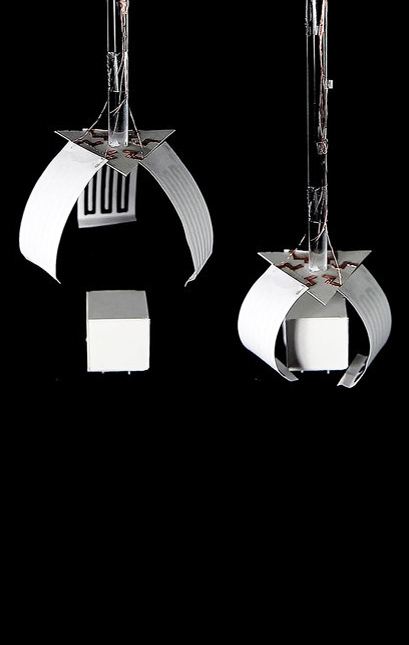
Morphing Matter Lab
Printed Paper Actuator
“Printed Paper Actuator is the project that achieves a low cost, reversible and electrical actuation and sensing method. This method that requires simple and easy fabrication steps enables our paper actuator to achieve different types of motion and even various electrical sensing abilities: touch sensing, slider, and self-bending-angle detection. We introduce a software tool that assists the design, simulation, and printing toolpath generation.” Morphing Matter Lab

Onformative
True/False
True/False is a kinetic sculpture composed of arrays of circular black metal segments set in mechanical columns. Interlocking and rotating around fluorescent light tubes, the cylinders cover or expose the light to display an endless number of patterns. The transformation of the sculpture is based on the shifting elements and their correlation to each other. As the segments do not move independently, for any of the cylinders on a column to change, the segments affected must work in unison to achieve the command. Reminiscent of devices originally used for calculations, such as Turing machines, the sound originates from the mechanical movement of the moving parts thus making the algorithm audible. The rhythm of »true/false« is captivating as variations in the visual choreography result in distinctive changes in its soundscape. Through the generation of algorithmic patterns and the repetition of endless tasks, »true/false« transforms itself into something more than the sum of its elements to reveal the beauty hidden within a basic algorithm.
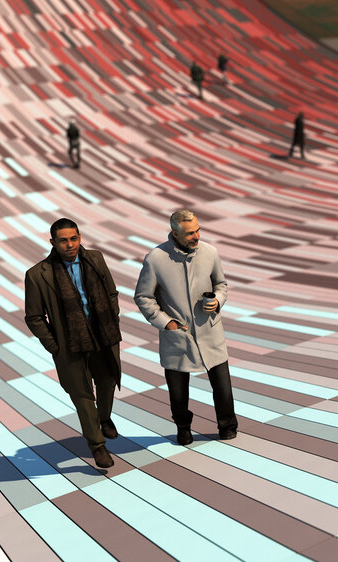
South Georgia Heritage
NEON – Fantastical Architecture, Art and Design
FROM DARKNESS TO LIGHT
South Georgia Heritage Trust launched an open call for a site-specific commission to be located on Grytviken the former whaling station of sub-Antarctic Island of South Georgia. The project was required to celebrate the whale through a reinterpretation of the former Flensing Plan (a large timber deck used to process the captured whales) and offer a message of hope for future generations by demonstrating how humankind can move from exploitation to conservation. Our proposal imagines that the deck of the Flensing plan has been cut like a piece of flesh from the ground and bent upwards to form an arc. The timber deck is replaced with concrete pavers which are coloured based on the activities which took place in the sites past and present (whale processing and whale watching). The coloured pavers are positioned to create a gradient which provides the visitor with a visual representation of the way the site has changed over time.
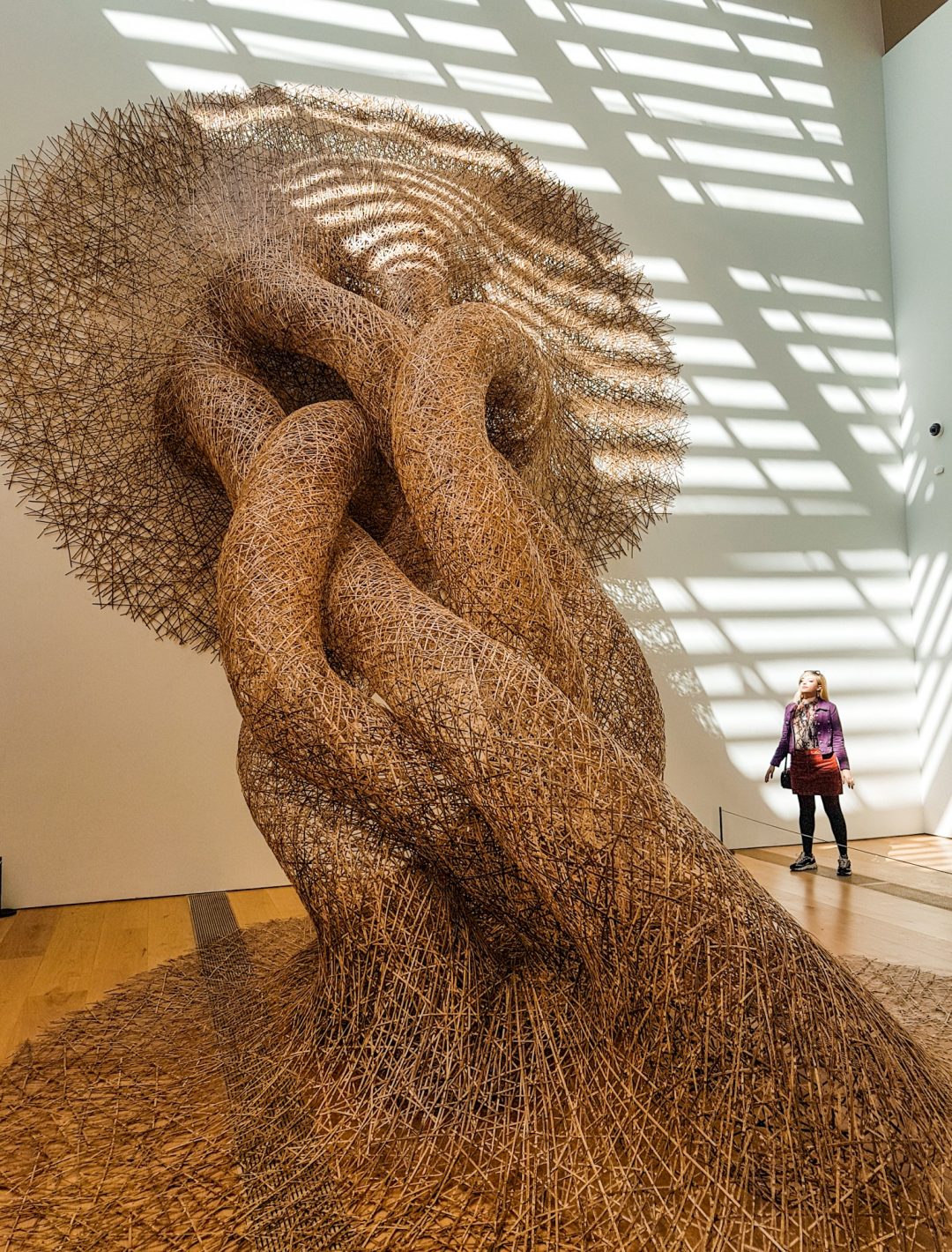
Tanabe Chikuunsai
Vuslat
Tanabe was born to one of Japan’s most prestigious bamboo pedigrees and is the fourth generation of his family to take the artist name Chikuunsai, meaning “master of the bamboo clouds.” Tanabe works hard to keep his family’s legacy alive by mastering the styles and techniques that the Tanabe family is known for, while also establishing his own original artistic voice.

Cho Gi Seok
“I will always focus on portraits. My aim is to try to express the characteristics of Seoul and my generation in my work.” In terms of visual motifs, Giseok’s portfolio features a few consistent elements. Firstly, a soft use of light, often accompanied by washes of colour. And, secondly, flowers of all shapes and sizes. These form a large part of Giseok’s compositions, dictating the aura of an image.
Styled by: Hyunji Shi.

JEFFREY SHAW
Disappearance
In this work the movement of a large video monitor mounted on an industrial fork-lift truck creates a virtual representation of a larger than life size ballerina. As the forklift moves the monitor up and down the ballerina is presented from head to toe, and as the forklift truck rotates the ballerina also appears to turn. In this way the monitor functions as a window that gradually reveals the virtual presence of the ballerina who is dancing in the same axis as the rotating forklift truck. Also visible inside the motor compartment of the forklift truck is a small rotating ballerina figurine in front of which a video camera moves up and down. This mechanism is electronically synchronised with the movement of the forklift itself and provides the closed circuit source for the video image of the ballerina that is seen on the monitor screen. Disappearance evokes and celebrates the memory of the ballerina on a music box (a first generation robot) and generates her virtual reconstruction to the extent that the machinery of reproduction itself now incarnates her pirouettes.
video
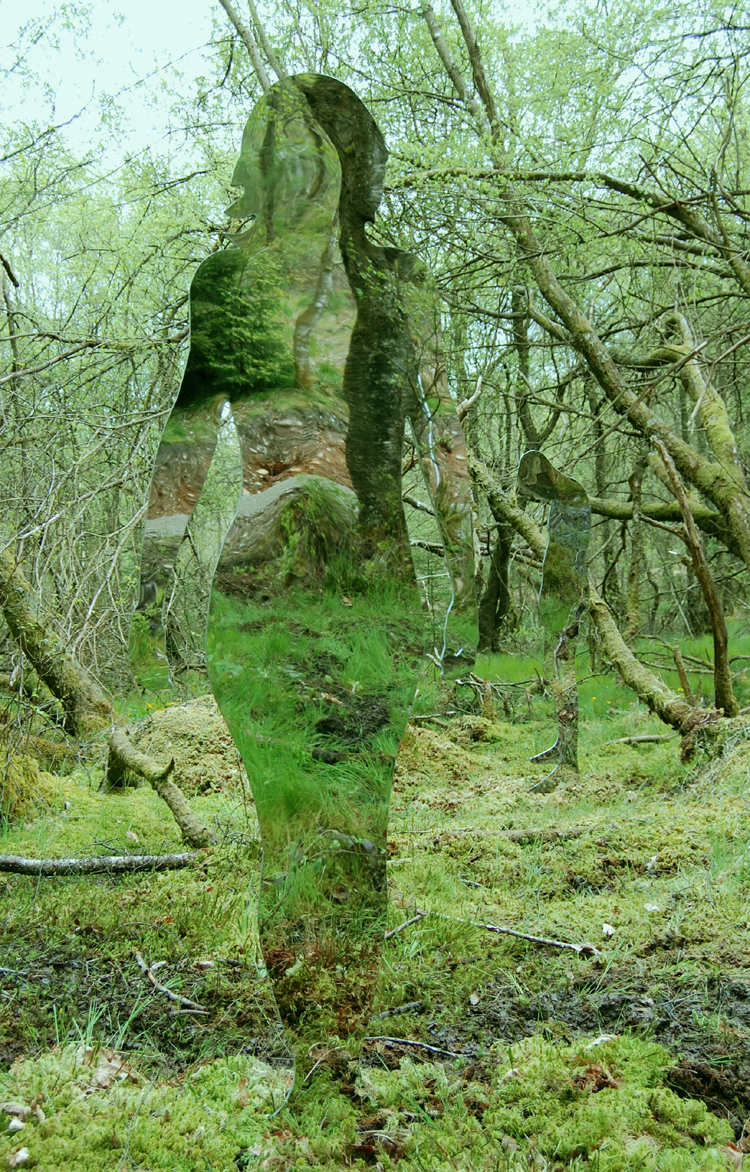
ROB MULHOLLAND
روب مولهولاند
罗布穆赫兰
롭 멀홀랜드
ロブマルホランド
Роб Малхолланд
Rob studied at Edinburgh College of Art and graduated with a BA [Hon ] degree in 1986[…] His work explores the human relationship with the wider environment. His approach is not judgmental, more reflective and questioning about the ever-changing world around us. The human desire to leave a trace of ones-self for future generations has always intrigued him. It’s a driving force to create and leave a semblance of our-selves as individuals and as a society. The reflective figures ask us to look again and consider the symbiotic relationship we have with our natural and man-made environment.
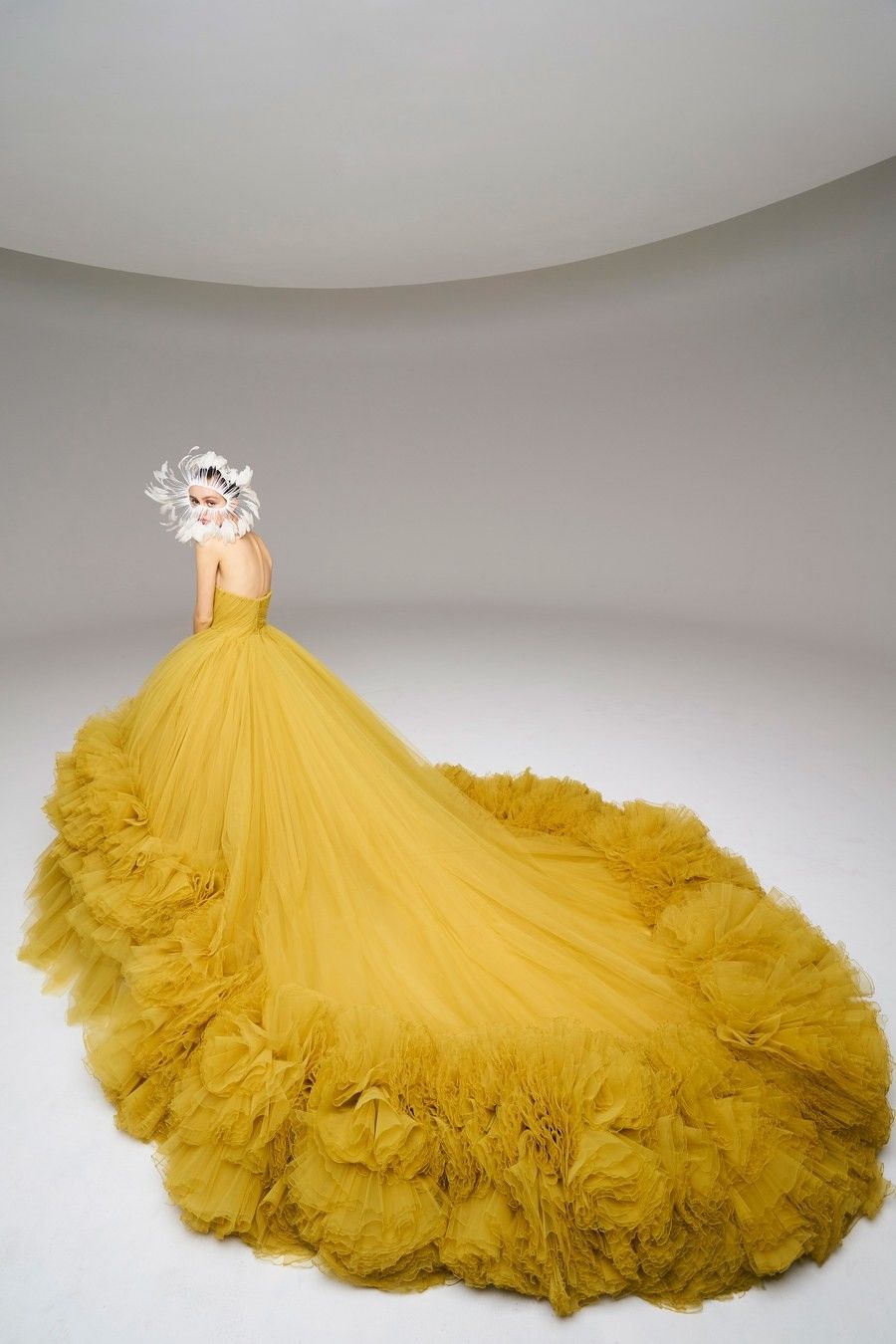
Giambattista Valli
Giambattista Valli, a leading and established name in the worldwide fashion scene, brought a new approach and meaning to luxury and beauty that attracted a universe of a young, modern and international generation of highly glamorous and sophisticated women from around the globe and has been praised by celebrities and fashion lovers
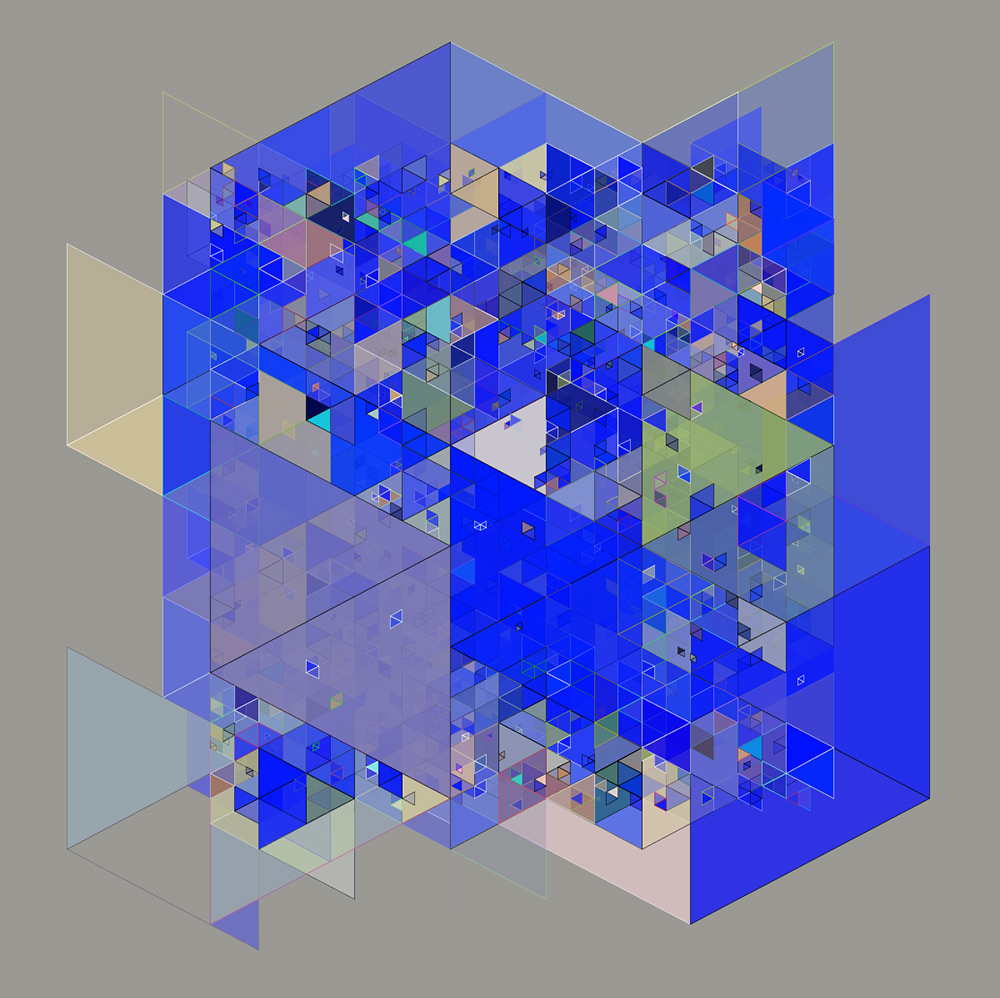
HOLGER LIPPMANN
TriangPaint
Holger Lippmann describes a part of his work as digital painting. What distinguishes digital painting from traditional painting on canvas or paper? We need to distinguish between two categories of digital painting. The first includes works created on the computer with ready-made graphic tools like virtual paint brushes or pens, in something like the way that non-digital pictures are created on paper or canvas. David Hockney’s painting of a sunflower on an i-pad is an example of this. The second category includes works using computer generation, in which programs coded by the artist continually produce new aesthetic concepts as images or animations. Every execution of the software creates new works within the pre-defined boundaries of the system. This process can be called generative painting.
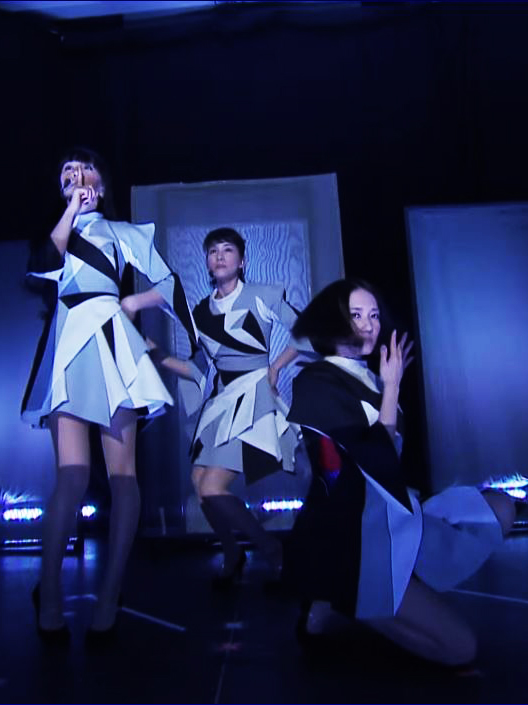
Daito Manabe
真鍋 大 度
Perfume
Perfume is Japan’s top techno-pop girl trio – Nocchi, Kashiyuka and Aa-Chan – whose music and synchronised dance sessions have won them a global online fan base. This year they have had their first sellout European tour. Their distinctive sound is the work of Japanese electronic music guru Yasatuka Nakata who has been their music producer since 2003. Their stunning performance at the Lions International Festival of Creativity at Cannes recently was the result of their collaboration with leading Japanese techno-artist Daito Manabe. Manabe is one of a new generation of programmers whose genre-crossing work has placed him at the cutting edge of techno-art-music-performance. His art embraces dynamic sensory programming, projection mapping and body capture; lasers, robots and sonar.
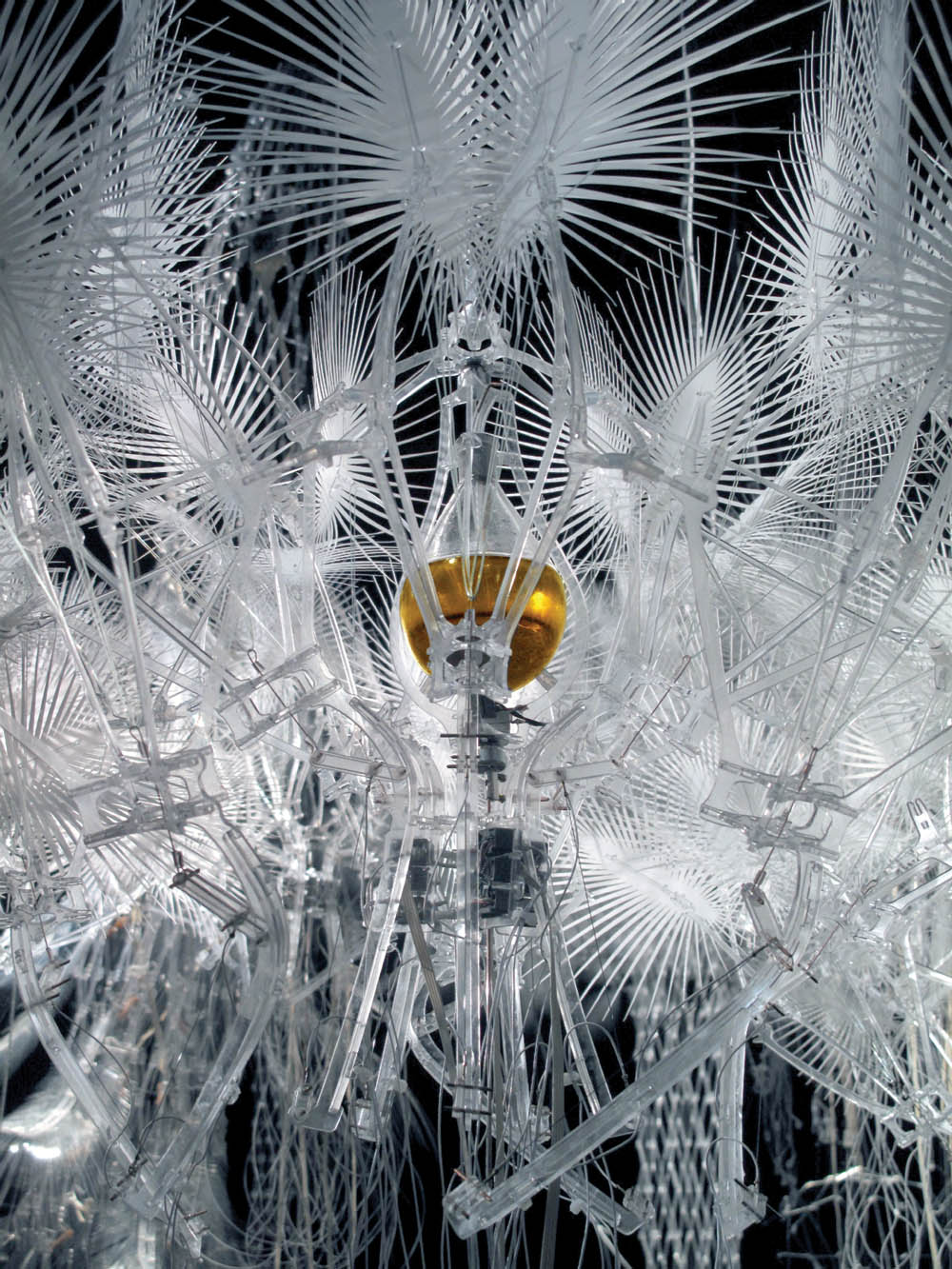
PHILIP BEESLEY
菲力浦 畢斯雷
Hylozoic Ground
The project’s title refers to ‘hylozoism’, the ancient belief that all matter has life. Hylozoic Ground offers a vision for a new generation of responsive architecture. The Hylozoic Ground environment can be described as a suspended geotextile that gradually accumulates hybrid soil from ingredients drawn from its surroundings. Akin to the functions of a living system, embedded machine intelligence allows human interaction to trigger breathing, caressing, and swallowing motions and hybrid metabolic exchanges. These empathic motions ripple out from hives of kinetic valves and pores in peristaltic waves, creating a diffuse pumping that pulls air, moisture and stray organic matter through the filtering Hylozoic membranes.

olga de la iglesia
woman 27
Olga is part of a new generation of young women reshaping the art world from Barcelona. Using social media platforms to gain creative traction, and either blurring the lines between creative genres, she describes herself as an “imager”. Fashion with a documentary edge, strange still-lifes against brightly colored backgrounds, and monochromatic arrangements of ordinary objects. Teo Sandigliano
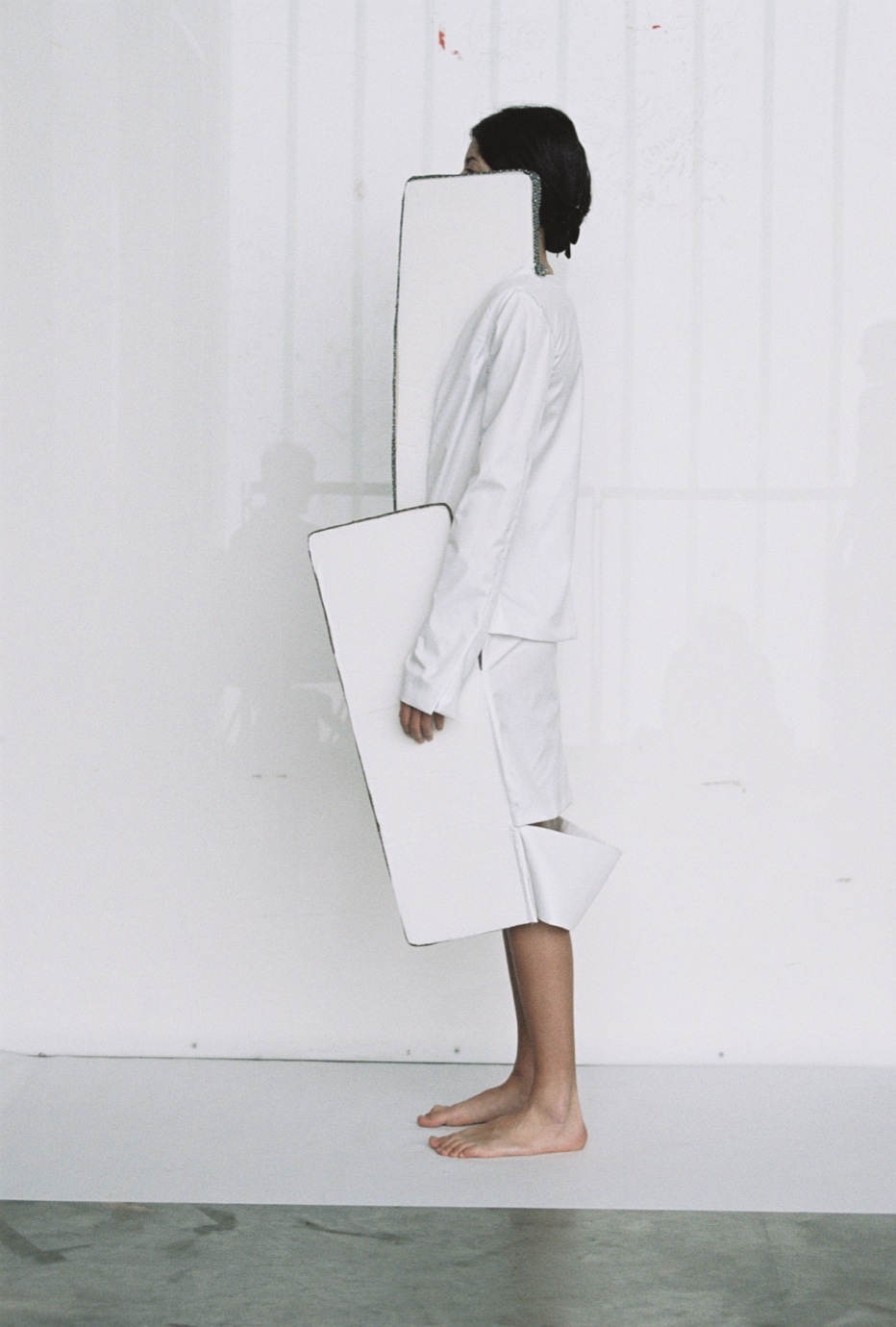
Claudia Girbau
Wearable Walls
Claudia is a designer in a sense that is becoming rarer and rarer in the generation when everyone seems to be one
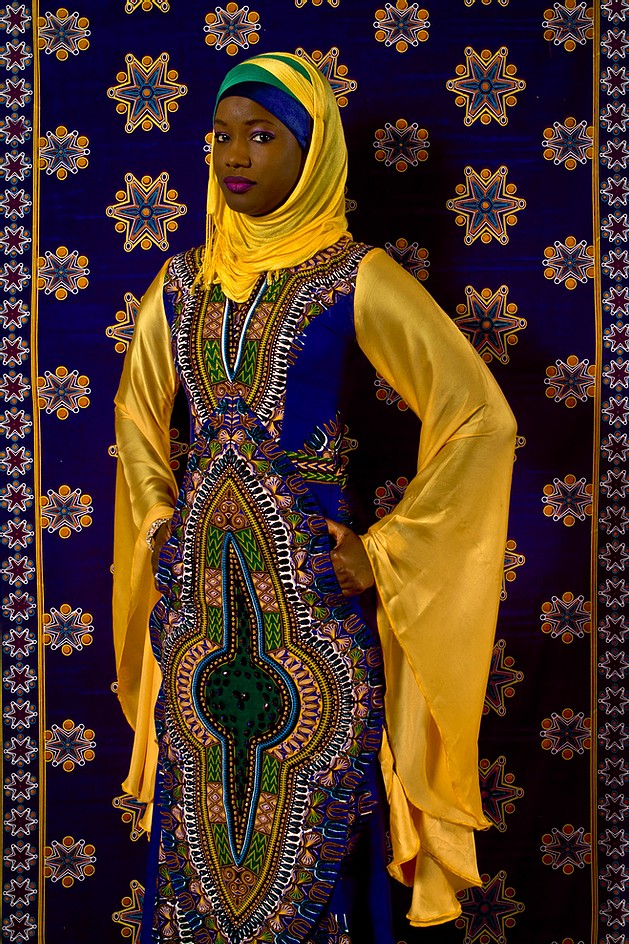
Omar Victor Diop
The Studio of Vanities
Oumy Ndour – Journalist, TV Anchor, Movie Director
The result is a collection of individual portraits, striking and captivating in their charm. Diop carefully chooses backgrounds and patterns to strengthen the subject’s personality and cultural references. Therefore, the colour of kenté fabric flawlessly matches the outfit of casually posing fashion designer, Selly Raby Kane. The clothes of artist Mame-Diarra Niang and model Aminata Faye fuse with an African background pattern. Using this particular approach, Diop becomes part of a tradition of African studio photography epitomized by the likes of Malick Sidibé and Seydou Keïta. He honours their pioneering work in his own creations, making use of contemporary techniques. Instead of merely creating striking images of an attractive young generation, Diop defines the images during the portraiture process, ensuring that decisions regarding pose, background and props are taken together with the subject. This makes it possible for Diop to come closer to the essence of the portrayed individual, and therefore do justice to the multiplicity and energy of Dakar’s contemporary cultural scene.
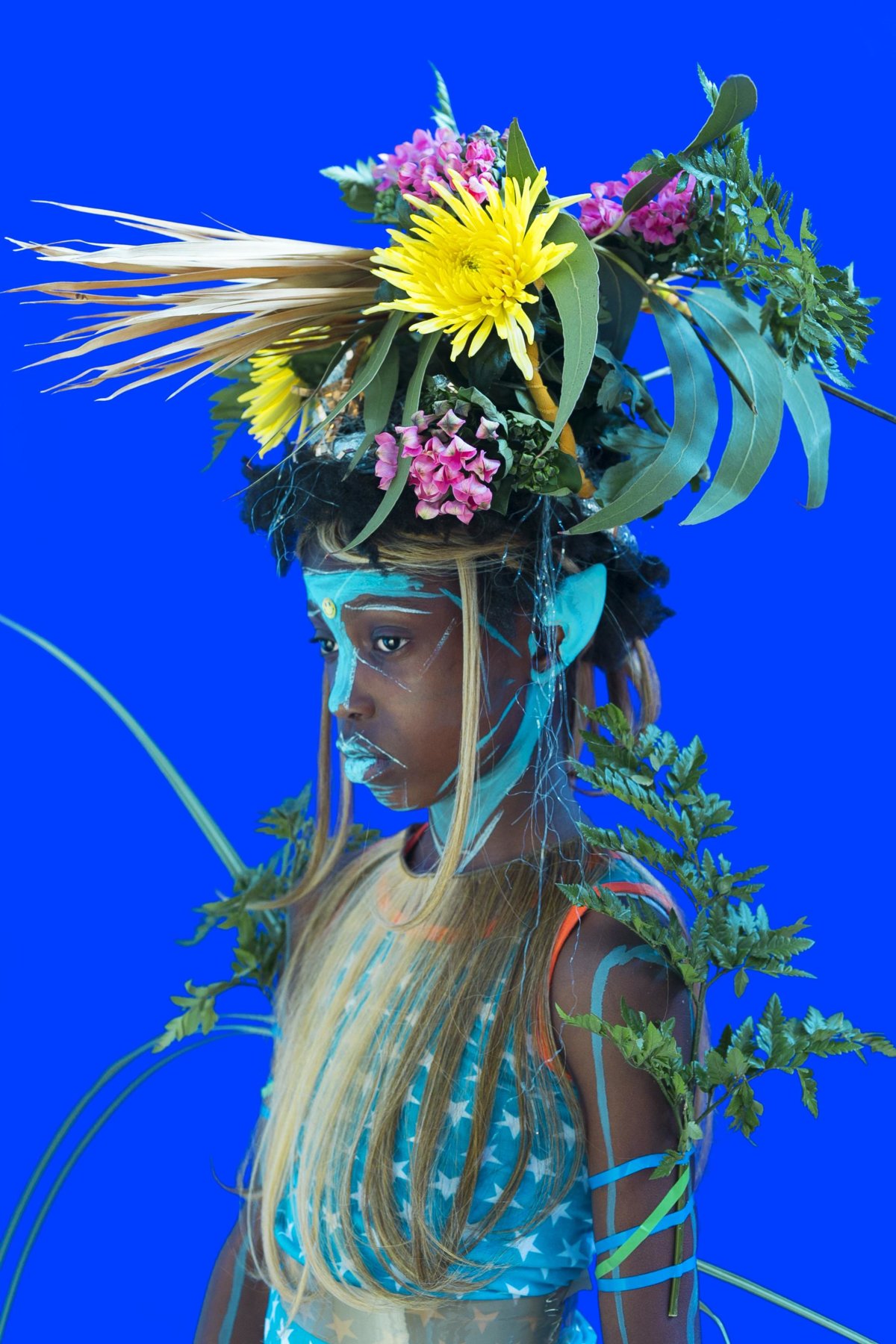
Melanie Bonajo
Last Child in the Woods
In her work, Melanie Bonajo examines the paradoxes inherent to ideas of comfort with a strong sense for community, equality, and body-politics. Through her videos, performances, photographs and installations, she studies subjects related to how technological advances and commoditybased pleasures increase feelings of alienation, removing a sense of belonging in an individual. Captivated by concepts of the divine, Bonajo explores the spiritual emptiness of her generation, examines peoples’ shifting relationship with nature and tries to understand existential questions by reflecting on our domestic situation, ideas around classification, concepts of home, gender and attitudes towards value.
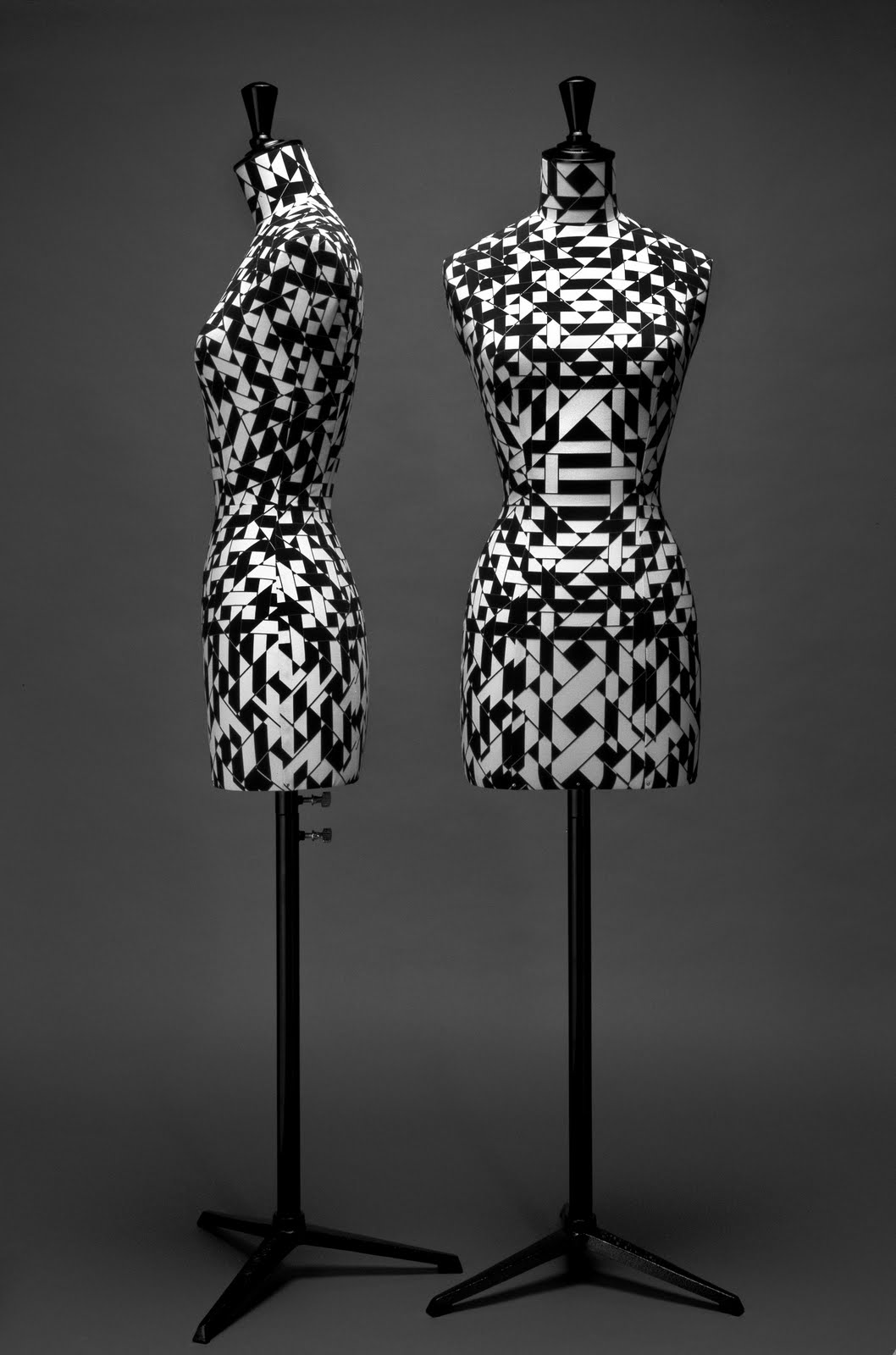
emmanuel bossuet
Paris-based Emmanuel Bossuet is one of the rare art directors of his generation to conceive his work with such an intense decorative dimension. Debuting as a graphic consultant at Philip Starck’s, he soon after established EEM as an agency aimed to one-of-a-kind projects. Studios such as Martine Sitbon or Sonia Rykiel requested him for his skill as a decorative designer.
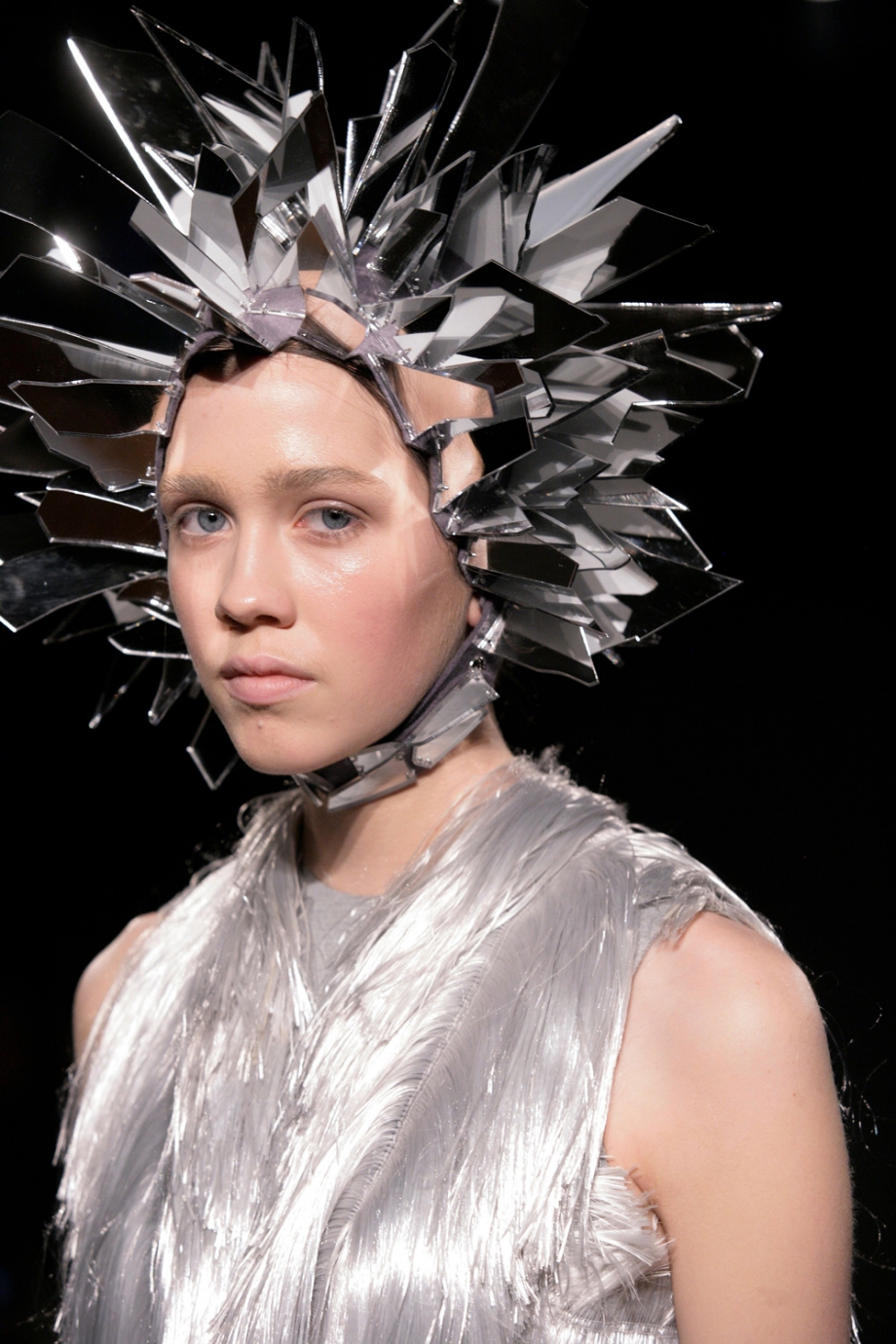
IRIS VAN HERPEN
Айрис Ван Эрпен
イリス ヴァン ヘルペン
Escapism
Iris van Herpen stands for a reciprocity between craftsmanship and innovation in technique and materials. She creates a modern view on Haute Couture that combines fine handwork techniques with futuristic digital technology .Van Herpen forces fashion to the extreme contradiction between beauty and regeneration. It is her unique way to reevaluate reality and to express and underline individuality.
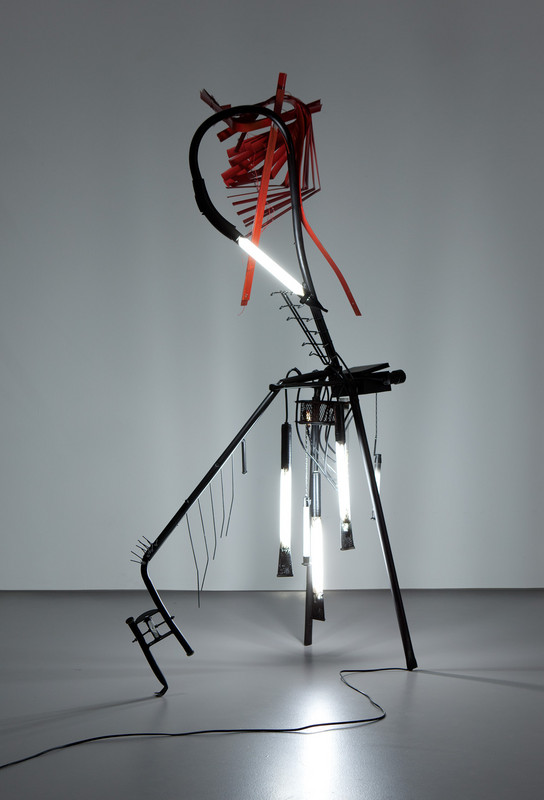
Madeleine Boschan
Madeleine Boschan is a deliberate and wilful protagonist of a new generation of artists who, in recent years, have subjected abstract sculpture to a critical actualisation. By reinstating the social dimension of a merely formalist approach, once more, she bestows contemporary aptitude and relevance upon it.
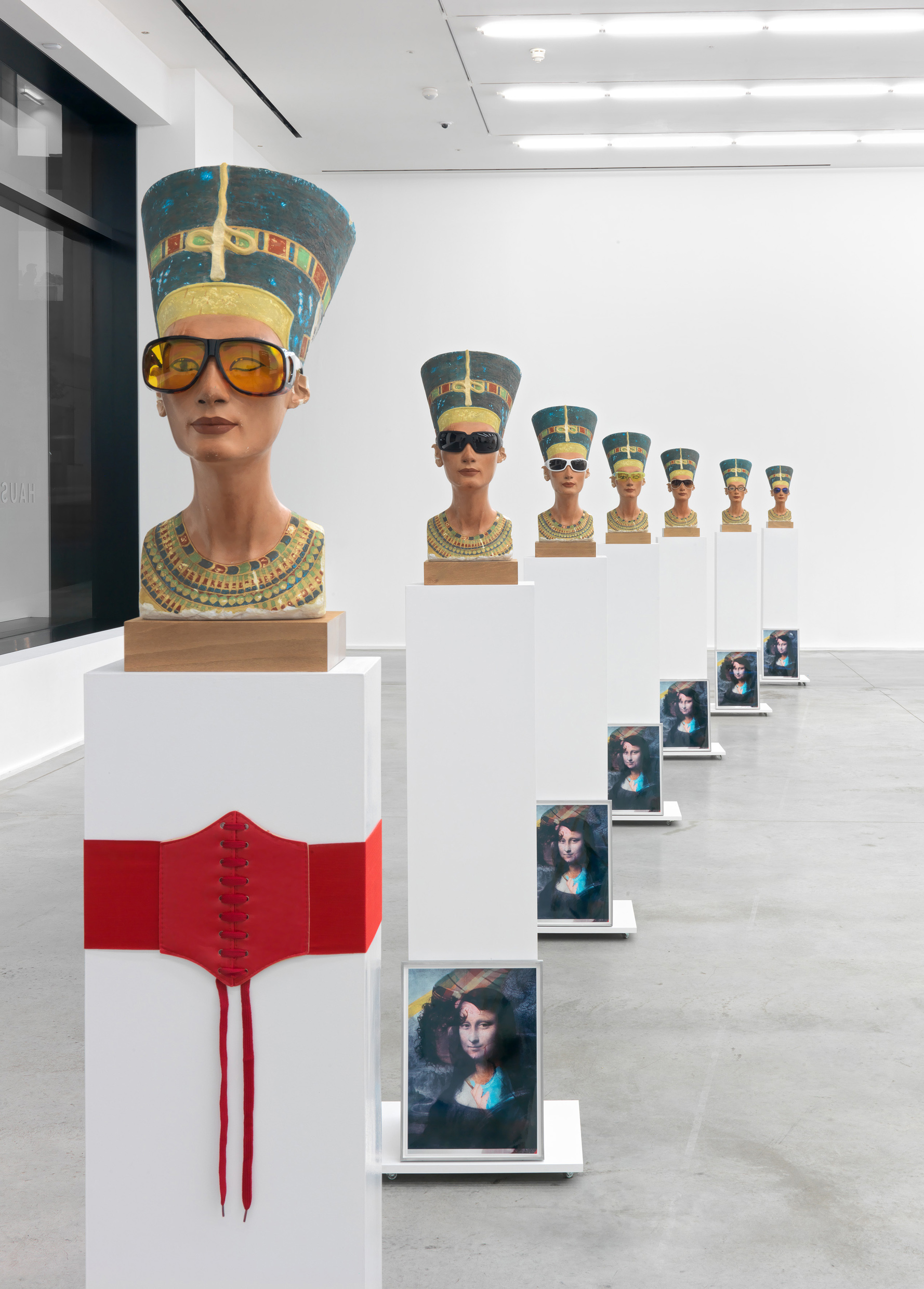
ISA GENZKEN
Иза Генцкен
Genzken’s work has been part of the artistic discourse since she began exhibiting in the mid-1970s, but over the last decade a new generation has been inspired by her radical inventiveness. The past 10 years have been particularly productive for Genzken, who, with a new language of found objects and collage, has created several bodies of work that have redefined assemblage for a new era. These groups of sculptures range from smaller, diorama-like works to room-filling installations.

RAF SIMONS AND PETER JELLITSCH
Peter Jellitsch (born 1982) operates at the intersection of science and art. His research-based practice develops in a complex process, in virtual and analogue worlds. His main concern is the visualisation of what is in fact invisible, of virtual phenomena and structures existing in everyday life yet imperceptible to the human eye. Peter Jellitsch is an exponent of a young generation whose perception of reality has undergone a radical change, due to new technology, and who quite naturally spread out their fields of work and ideas in new dimensions.

FREDERIK HEYMAN
فريدريك هيمان
弗雷德里克·海曼
פרדריק היימן
フレデリックヘイマン
ФРЕДЕРИК ХЕЙМАН
His work, humorous and surreal, helps to erase boundaries between photography, graphic design and space shaping. With many distortions (real or digital), not to mention strange and imposing installations, Heyman creates a world both unstructured and fascinating. Part of a new generation of photographers, his aim seems to give birth to a new kind of collaboration between all the arts, definitely modern and complex.
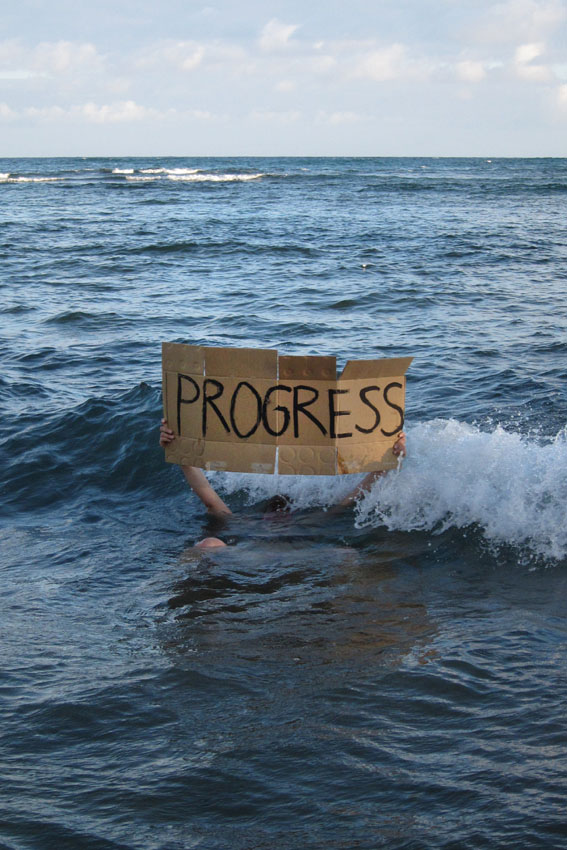
MELANIE BONAJO
梅拉妮·柏娜桥
progress
Melanie Bonajo exams the paradoxes inherent in our future-based ideas of comfort. Through her photographs, performances, videos and installations Bonajo examines subjects related to progress that remove from the individual a sense of belonging and looks at how technological advances and commodity-based pleasures increase feelings of alienation within the individual. Captivated by concepts of the divine, she explores the spiritual emptiness of her generation, examines peoples’ shifting relationship with nature and tries to understand existential questions by looking at our domestic situation, idea’s around classification, concepts of home, gender and attitudes towards value.

